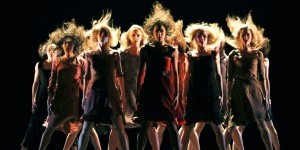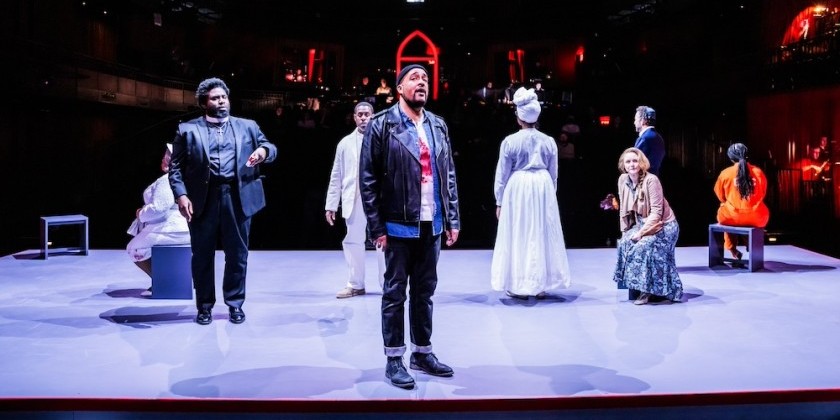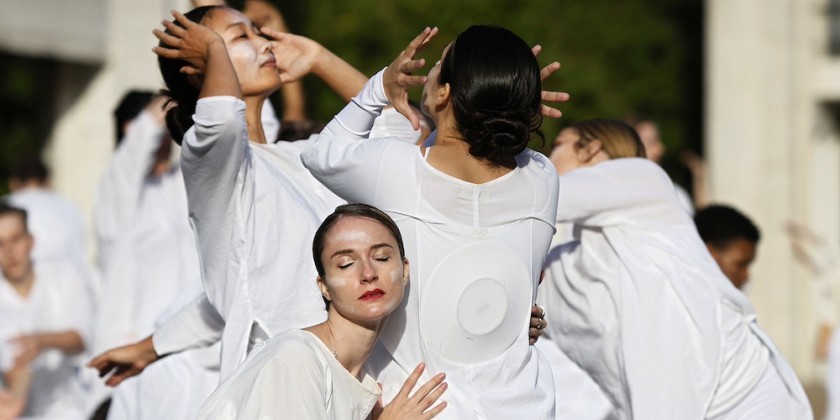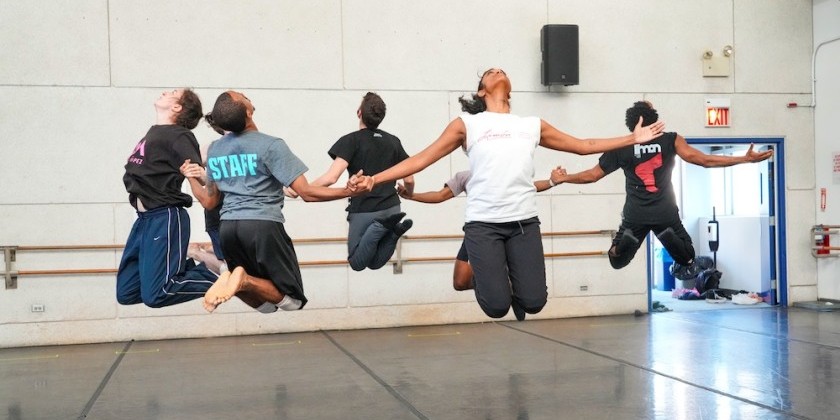Things I am learning about Birthdays, The Rite of Spring and Judson Dance Theater

Where is the New Avante Garde?
Things I am Learning About:
Birthdays, The Rite of Spring, Judson Dance Theater
September 26, 2012
Christine Jowers for The Dance Enthusiast
Birthdays are not only celebrations, they are milestones that offer a chance to look back and re- evaluate our past with the clarity of hindsight. Perhaps they can reveal where we may want to go next, or insights into why we are here, or maybe just help us ask better questions. With this 2012-2013 performing season, two particularly important artistic birthday parties arrive, and both are celebrations for the old guards of the avant-garde. I wonder, where is the party for the new avante-garde? Does anybody know? Are dancers there?
 |
| A dancer with the Joffrey ballet performs in a recreation of the original The Rite of Spring |
First there is the 100th birthday of Le Sacre Du Printemps or The Rite of Spring, the revolutionary symphony composed by Igor Stravinsky for the impresario Sergei Diaghilev's Ballets Russes. Choreographed by Vaslav Nijinsky and designed by Nicholas Roerich, Sacre… caused riots when it was first performed at the Théâtre des Champs-Elysées in Paris in May of 1913. The music’s pounding and discordance felt unusually wild and raw. The scenery was primitive, colorful and cubist. The choreography’s depiction of “virgin” women and men furiously dancing with a jarring use of weight, flat feet and violently, un-balletic angles appalled audiences. The Rite of Spring scandalously uprooted comfortable tastes and embraced 20th Century Modernism.
For a whole year, Sacre… is being feted by Carolina Performing Arts and the University of North Carolina at Chapel Hill. The university wants to “revisit the seismic tremor created by the 1913 premiere.” It is the stuff of legend that Nijinsky had to shout out the counts of music to the dancers because the din of brawling in the theater was so powerful they couldn’t hear the music.
Not only will the Joffrey Ballet recreate the original 1913 sensation in for the Carolina festival, but the dance ensembles Béjart Ballet Lausanne and Compagnie Marie Chouinard will each present unique reinterpretations along with the Martha Graham Dance Company who will show a version by Graham not seen since 1993.
Among the most anticipated performances that include movement are new creations that will explore the impact of 1913’s Stravinsky in today’s terms. I am excited to discover what the puppeteer Basil Twist’s “ballet without dancers” will bring to the conversation. (I think puppets can dance.) And as far as audacious human bodies taking the space, I can’t wait to find out what choreographer Bill T. Jones’ and theater director Anne Bogart will draw out of the collaboration with their respective companies. Bogart describes the project as breaking apart the icon of The Rite of Spring, and picking up the shards to re-examine. That seems a seismic statement. What will we see in those fragments?
The second celebration of the 2012 -2013 performing season is the 50th birthday of Judson Dance Theater, the radical movement born in 1962 that gave birth to the likes of Yvonne Rainer, Simone Forti, Elaine Summers, Lucinda Childs, Trisha Brown, David Gordon, Valda Setterfield and Steve Paxton to name a few. Dancespace Project at St. Marks Church in New York City dubs the bash Platform 2012: Judson Now.
This fall, performances, discussions, panels, films and artists residencies will ponder the past and the current creative directions of Judson-era artists as well as younger artists working with similar ideas, inspirations and references.
The Judson movement turned dance on its head. It dared to suggest dance performance could be improvised; that dance could make use of everyday activity and not require trained dancers. Dance didn’t need to have meaning thrust on it, the body had is own meaning. Movement didn’t need to exist on a proscenium stage or center stage. The stage could be anywhere, like the side of a wall, or the tops of roofs, or the streets of the city.
Inspired by the protests and desire for change in politics and civil rights in the ‘60s, the chance theories of John Cage and Merce Cunningham, and the fertile composition classes of Robert Ellis Dunn, the Judson artists may not have caused riots to break out in the audiences of New York, but not everyone appreciated their experiments. On January 11th 1966, Clive Barnes of The New York Times wrote a review of a concert performed by David Gordon, Yvonne Rainer and Steve Paxton entitled “Village Disaster.” In the article he said, “Total disaster struck the Judson Church in Washington Square last night, struck it with the squelch ignominy of a tomato against a pointless target.”
Judson Dance Theater rocked the status quo and its wave rippled out into all the arts. It upset conservative dance critics. But why didn’t anybody riot in the streets? Was it because the times were too turbulent or was it because everyone in the audience was a member of the same artistic group?
Daryl Chin, in his 2010 lecture “Mistaken Identities” (on the website ReadingDance) quotes Susan Sontag’s Happenings: An Art of Radical Juxtaposition (1962). “One sees mostly the same faces again and again. To have been in the audience for many of the events that constituted 'the Judson Dance Theater' turned out to be an experience which was quite circumscribed.”
How can we be radical if everyone in the audience is a peer?
1962 was only 50 years ago, and many of the participants in Judson Dance Theater are still here with us, alive and creating work. If you have a question about what artistic life really was like in 1962 or shortly after, chances are you can ask someone directly. Last Monday night, September 17th, during an evening with Lucinda Childs, Judy Hussie -Taylor the executive director of Danspace Project at St. Marks Church, was surprised to find out that during those rebellious times, Childs and a number of other Judsonites regularly studied classical ballet only to run off to their non -dance experiments in the afternoon. Also surprised was Child’s ballet teacher at the time, Lucas Hoving, famous for his theatrical roles dancing with Jose Limon and Kurt Joos. Child’s remembered him saying “For this, you study ballet?”
70 some-year- old Childs performed a work she created in 1965 called Screen. I had read about this work in performance history as Museum Piece but had never seen it. Childs, now famously regarded for her pure movement, minimalist choreographies exploring the openness of repetition, explained that she had recently returned to her older prop-based works because people had asked to learn them. She didn’t care to go into a company with only video and notes, “It is a special thing, a special concentration being alive and real (in a piece),” she remarked.
We capture the alive pleasure of watching Childs’s matter of fact approach to the surreal task of walking through the corner of a Seurat painting. How natural it seems for this tall elegant woman to carefully place colored dots on the floor of St. Marks Church, and walk through them backward using only what she can see through a tiny cosmetic mirror as her guide. All the while Child’s coolly explains what she is doing. Among other things, she speaks of the plays of light in Impressionism and tells us what is happening as the information has traveled from her retina to her brain. The experience of her performance mirrors the way one feels after years of studying a painting or sculpture in a book, when finally an opportunity to see the work of art in “real life” up close occurs. It is always so much more than you thought.
The Rite of Spring at 100
Platform 2012- Judson Now











